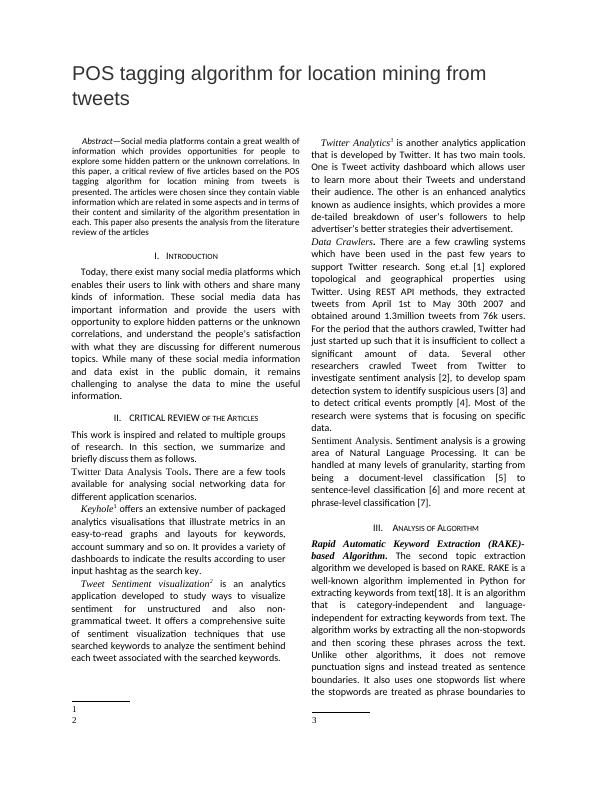POS Tagging Algorithm for Location Mining from Tweets
To read and analyze NLP articles on POS tagging, choose a tool or algorithm, collaborate with a partner, and write a final article based on the research.
3 Pages1584 Words108 Views
Added on 2023-04-20
About This Document
This paper presents a critical review of five articles on the POS tagging algorithm for location mining from tweets. It discusses the tools available for analyzing social networking data, such as Keyhole and Tweet Sentiment Visualization. It also explores the use of data crawlers and sentiment analysis techniques. The paper concludes by evaluating and comparing different algorithms for each analysis component.
POS Tagging Algorithm for Location Mining from Tweets
To read and analyze NLP articles on POS tagging, choose a tool or algorithm, collaborate with a partner, and write a final article based on the research.
Added on 2023-04-20
ShareRelated Documents
End of preview
Want to access all the pages? Upload your documents or become a member.
Data Mining for Business Intelligence: A Supervised Approach
|15
|1255
|236
Application of Machine Learning Assignment 2022
|13
|2705
|17
Customer Analytics and Social Media
|10
|728
|1
Knowledge Engineering: Rapid Miner
|20
|3944
|75
Implementation of Supervised Data Mining in Business Intelligence
|15
|3747
|223
Big Data Analysis and Techniques for Business Growth - Desklib
|7
|2082
|358

